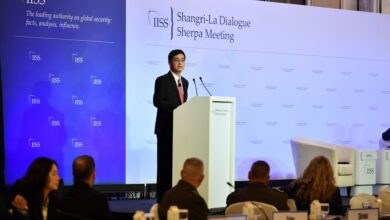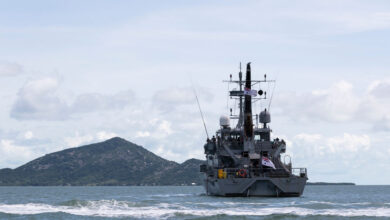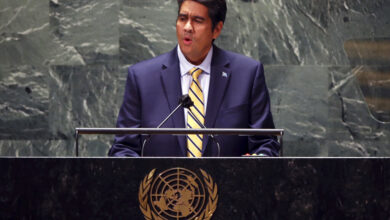Women finding more opportunities in Japan’s military

Patti Renda
Serving as fighter pilots, tank drivers and regimental commanders, women are reaching new heights in Japan’s Self-Defense Forces as gender restrictions are lifted and demographic changes make military recruitment more challenging.
Misa Matsushima, who was inspired by the Tom Cruise movie Top Gun, completed her training in August 2018 to become Japan’s first female F-15 fighter pilot in the Air Self-Defense Force. She hopes to inspire other Japanese women to pursue similar dreams, now that they can, with the number of female Self-Defense Force (SDF) members targeted to double by 2030.
Japan’s Ministry of Defense (MoD) lifted gender restrictions for fighter and reconnaissance pilots in November 2015, according to Japan’s Kyodo news agency, enabling Matsushima, pictured, and other women to serve in the SDF.
In the Ground Self-Defense Force (GSDF), a woman leads about 700 subordinates in her capacity as regimental commander for logistics support. Moreover, the GSDF now features female attack helicopter pilots and tank drivers. The Japanese Ministry’s Joint Staff, which directs and administers all SDF operations, sees important posts becoming available for motivated and qualified women in the Maritime Self-Defense Force.
MoD noted that recruitment efforts have increased in difficulty because Japan faces the demographic challenges brought on by an aging population and low birthrates.
“The source of recruitment is becoming smaller,” Hideshi Tokuchi, former Japanese vice minister of defense for international affairs, told FORUM. “Unless women are given greater roles in the SDF, necessary personnel levels of the forces will not be maintained.”
To encourage the participation of women in the military, the MoD instituted the Female Personnel Empowerment Initiative (FPEI) in 2017 to “double the percentage of female JSDF personnel,” according to MoD documents.
“The SDF is a microcosm of Japanese society,” Tokuchi said. “What is happening in the general society happens in the SDF. It is a natural thing.”
With FPEI, MoD aims to increase female personnel in line with other major industrialized nations, reported Kyodo in April 2017, “by thoroughly reviewing and removing restrictions on women’s participation.”
Jeffery Hornung, Japan defense analyst at Rand Corp., indicated that Japan’s demographic challenges, especially relative to China, warrant these initiatives. Japan needs “to rely more on women,” he told FORUM,adding that “unmanned assets … in the air, on the ground” will also become more important. To secure the valuable human resources that motivated and qualified women offer, MoD recognized the need to lift gender restrictions, he explained.
Specifically, MoD wants to increase the percentage of female SDF personnel from 6.5 percent to 9 percent by 2030, according to Kyodo, although some restrictions still hold. Due to equipment limitations and labor laws, tunneling units remain off limits for women. Women also are prohibited from serving in units that handle hazardous materials.
The drive toward greater gender equality in Japan’s defense workplaces is, however, unremitting and welcome, Tokuchi concluded.
“Diversity is becoming more respected in order to survive in this increasingly difficult environment,” he said. “Different views, ideas and initiatives are more precious than ever.”
Patti Renda is a FORUM contributor reporting from Tokyo.




